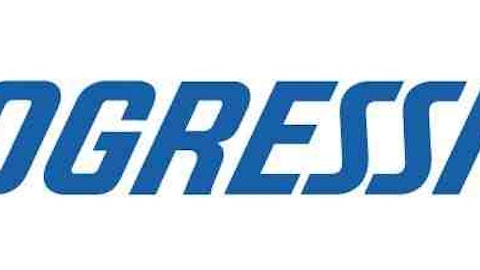One of the biggest insurance companies on the market, American International Group Inc (NYSE:AIG), has recently reported a loss of nearly $4 billion in its fourth quarter earnings results, due to Hurricane Sandy and the sale of its airplane leasing business unit. In February, AIG has fallen from $39.45 to $37 per share. However, in the past 12 months, its share price has advanced by more than 29%. Is AIG a long term buy after its fourth quarter earnings results?

In the fourth quarter of 2012, American International Group Inc (NYSE:AIG)’s net loss was $4 billion, or $2.68 per share, compared with net profit of $21.5 billion, or $11.31 per share, in the fourth quarter last year. For the full year 2012, the net income came in at $3.4 billion, or $2.04 per share, just less than a fifth of the 2011 net income at $20.6 billion, or about $11 per share.
The significant reduction in AIG’s net income in the fourth quarter and full year 2012 was due to two main reasons. First, AIG booked around $2 billion pre-tax catastrophe losses from Hurricane Sandy. Second, the net loss on the sale of International Lease Finance Corporation (IFLC) was around $4.4 billion. However, its operating income has improved significantly compared to 2011. Its Insurance operating income has grown from $4.4 billion in 2011 to nearly $6 billion in 2012, while the change in fair value of AIA and ML III has increased to $2 billion and nearly $2.9 billion, respectively. Thus, within a year, the after-tax operating income has more than tripled from $2 billion to $6.6 billion.
At the end of 2012, American International Group Inc (NYSE:AIG) agreed to sell 90% of its stake in aircraft leasing business to a Chinese consortium for as much as $4.8 billion. AIG bought IFLC in 1990 as it thought that the long life of aircraft assets could be matched the maturities of its life-insurance policies. AIG was one of the big financial giants that received a $182 billion bailout from the US government. Now, the $182 billion has been fully repaid, with the government realizing a profit of nearly $22.7 billion. AIG has been quite active in divesting its non-core businesses. In addition to the IFLC sale, the insurer has raised nearly $6.5 billion by selling the Asian life insurer AIA. Indeed, the divestiture of its non-core businesses will help AIG to regain its focus on its core global insurance businesses.
AIG Should be Worth At Least $70 per share
At the current trading price of $37 per share, AIG is worth around $57.7 billion on the market. The market is valuing AIG at only 0.56x book value. Bruce Berkowitz once commented that AIG was “picking up pennies in front of a steamroller.” According to him, a business like AIG should be trading at a multiple of the book value. Thus, at lease AIG might reach its book value of around $66.38 per share. He said, “Maybe that happens in the $70s or the $80s, I don’t know. But it gets about there. We‘ll see. And companies such as AIG can trade at a multiple of book value. But I don‘t want to go there yet. Just getting to our estimate of book value will be a very nice return for shareholders.”
Peer Comparison
Compared to its peers, including Allianz SE (ADR) (PINK:AZSEY) and AXA (ADR) (PINK:AXAHY), AIG seems to have the cheapest EV multiple. While AIG is valued at only 0.56x price-book ratio, the P/B of Allianz and AXA was 0.93x and 0.67x, respectively. Allianz, with a trading price of $13.50 per share, is worth nearly $61 billion on the market. AXA is the smallest among the three. With nearly $40 billion in the total market cap, its share price stays at around $17 per share. Among the three, AXA is paying the highest dividend yield at 4.3%. Allianz is paying 3.2% dividend yield, while AIG is not paying any dividend at the moment. Furthermore, AXA seems to have the most conservative balance sheet, with a 0.2x debt/equity ratio, while the debt/equity ratio of Allianz and AIG are 0.6x and 0.5x, respectively.
Foolish Bottom Line
With the divestiture of the non-core units, AIG will come back with much stronger revenue and profits from its core insurance business. As AIG is valued the cheapest at nearly 60% discount to the book value, AIG is definitely a long-term buy at its current price.
The article This Leading Global Insurer is a Long Term Buy originally appeared on Fool.com and is written by Anh HOANG.
Copyright © 1995 – 2013 The Motley Fool, LLC. All rights reserved. The Motley Fool has a disclosure policy.




